On-page SEO is the practice of optimising individual web pages in order to rank higher on search engines (SEs). The end result should be more relevant traffic to a website. On-page refers to both the content and code of a page as well as design aspects. This is in contrast to Off-page SEO which focuses on content and links not on your website. On-page SEO has many crossovers with technical SEO and Content marketing with links to relevant sections within this guide. Feel free to skip ahead to the relevant section.
Table of Contents
Keyword Research for On-page SEO
Keyword research is the first step when it comes to planning your On-page SEO strategy. It is the only way to figure out what people are typing into SEs. Don’t want to waste your time producing content or optimising a page for a query no one will search for.
The essential steps in keyword research include:
- Discover what your target audience is searching for on SEs.
- Find what keywords your competitors are ranking for.
- Analyse search volumes of those keywords.
- Find related and relevant short and long-tailed keywords.
- Understand the search intent of searches, are they:
- Informational – “What dog breed is in the movie Beethoven?”.
- Investigative – “What is the difference between raw and cooked dog food?”.
- Transactional – “Buy dog food”.
- Navigational – “The Sheffield dog food company”.
- Local navigational – “Pet store near me”.
- Adapting keywords for location, competitors, season and any other modifiers.
- Create a content and page plan based on your keyword research.
Keyword Research Resources
On-page SEO Ranking Factors
Once we understand what keywords we wish to target for a specific page, we need to implement the below tactics to rank on SEs. Some of the techniques below hold a lot of weight with SEs, while some have a smaller ranking factor. Whatever their value, these are all things to include in your on-page SEO strategy.
Content
The content on a page, specifically the wording is a vital part of on-page SEO. Without this content, Google and other SEs will not be able to discern what your page/website is about. Nor will they know whether it is relevant to searchers. The on-page content of a specific page should be the first thing you focus on. Each page should focus principally on one of your selected keywords.
Unique Content
When creating content to rank, you should ensure that the text is unique. Content should be unique from other websites’ content and unique on your own website. SEs reward fresh content that adds value to your audience. Furthermore, It helps SEs distinguish whether this is the right page to send a user to.
Using keywords in content
When creating your content, you should remember a few things when it comes to keyword usage. After selecting the target keyword or phrase for the specific page you should ensure:
- The first 100 words contain the keyword
- The density of keywords for the whole text is around 1-2%, so for longer pieces, you will need to include the target keyword many more times than a short blog or product page.
- Include complementary keywords that are either variation on the main keyword or are long-tailed keywords for different user intents.
Word Count
Quality is more important than quantity but there is normally a minimum word count that Google likes to see. 300 words in the minimum considered for a web page but for articles, case studies and whitepapers, you should consider upwards of 700. It’s all about appropriateness when it comes to word count. For this article, upwards of 2500 is good because we are covering a dense and far-reaching topic. If you are writing a small explainer that only requires a quick answer to a query, then just use 350 words. There is no point in adding fluff just for the sake of it.
Spelling and grammar
It may seem like a small thing, but maintaining good spelling and grammar in your writing can aid your ranking. Not only do SEs appreciate this aspect of quality content, but so will your users who will gain more trust from your offering.
Relevant to the user
SEs will only display your website in Search Engine Results Pages (SERPs) if the content of your page is relevant to the searcher’s query. As this is the essential reason for SERPs then relevance is the ultimate on-page SEO ranking factor. Write content that helps your users, keeping in mind their search intent.
On-Page SEO Content Resources
Technical
On-page SEO has a major crossover with Technical SEO aspects. However, while Technical SEO is often from a site-wide perspective, the tips in this section are specifically focused on each individual page of your website.
Title tags
All web pages need a title and you can utilise this title to improve your ranking. Here are a few things to consider;
- You must absolutely use the keyword in the title of your page, but to boost it further try to include it at the front, sometimes called front loading.
- Add modifiers to your title tag especially at the end, e.g. if the title was ‘The best fitness apps’ you might want to include the words “free” and “paid” to distinguish what types of apps you are discussing.
- If relevant you can add the year to the title, e.g. Favourite Personalised Gifts 2020.
Metadata
Metadata is defined as an explanation about other data, so for web pages, it’s the shorthand to SEs and users looking in SERPs about what the web page is about. For web pages, metadata includes;
- Page title – use the tips above to optimise for keywords and ensure it isn’t longer than 60 characters, as Google typically displays the first 50–60 characters of a title tag.
- Meta Description – A brief description explaining what a page is about.
- You should include the keyword in the description, ideally front-loaded, as well as any other relevant secondary keywords.
- Description length should be no less than 50 characters and no more than 160 otherwise it will be truncated by SEs.
- The description should be rich with relevant information to a potential search query.
Below is an example of how metadata is displayed on Google. I Googled “care for house plants in winter” and this was the first result. The title includes the keywords I searched for “Care”, “houseplants” and “winter”. The meta description has pretty similar wording to my query, “caring for houseplants in the winter”, as well as other relevant information I may be looking for. Not only has Google easily identified that this page is relevant to me, but the title and description are also enticing to me as a searcher.
On-page Links
Including links to other pages on your site can improve the experience for users and help SEs understand how this page is relevant to other content on your website. When using internal links, remember:
- Make sure they are visible. Don’t hide links behind extra actions, include them in the main body of the website.
- Don’t use too many links, no more than 100 hyperlinks should be used.
- Ensure links are relevant to the original content.
- Any links that are placed in the site must have relevant anchor text. This is the text that links to the page and it should include a relevant phrase to where your user will end up.
You should also include external links to higher ranking websites as long as they are relevant to your content. For example, if you are a mechanic and writing about MOTs, you may want to include a link to the DVLA on the government website. Not only is this helpful for your readers, but it also shows your content is well researched, relevant and valuable to SEs.
Images
Every page on a website should include at least one image and to get the most out of that and other images for SEO you can use these tips:
- Although not currently a ranking factor, there is some suggestion on the grapevine that unique photos rank better than stock imagery.
- Make sure images are relevant to what your content is about
- Include your keywords in the image alt tag and try to make the image alt tag as descriptive as possible.
- Resize your images and optimise them for speed.
URLs and Naming Conventions
The URL of your individual pages are important on-page factors and is another technical SEO element that should be implemented at a sitewide level. URL should:
- Be easy to understand (i.e. should include relevant words rather than a string of random numbers and letters.
- Have a hierarchical structure where relevant, i.e. www.companyexample.co.uk/products/candles/christmas-tree-scented-candle
- Include the primary keyword.
You can also use categories, tags and filters to make finding the page easy for users as well as letting SEs understand where in your website the page fits.
OG Tags
Although not currently a ranking factor, completing your Open Graph tags is just good housekeeping on a page. Make sure your title, description and image plus any other OG data are accurate. This will ensure sharing your content is easy for people and will look the best it can on social media platforms. Social sharing is a ranking factor for Off-page SEO so it’s a good step to include in your On-page SEO plan while you are here.
Technical On-Page SEO Resources
User Experience and Design for On-page SEO
Further to the technical and content elements of on-page SEO, I believe the design and UX of a page are just as important. Great UX is essential to improve performance metrics of your website and the number of conversions that occur.
Above the fold
Above the fold is the content that displays on a site without requiring the visitor to scroll. It’s a best practice tactic to make sure the most important information is placed where users can see it straight away. This is because above the fold content is seen more frequently and users may not scroll further down the page if the above the fold content does not engage. The content above the fold has two tasks: clearly explain the value proposition of the page and signal that there is more valuable content below the fold. If the information is well placed and enticing, then users are more likely to scroll down and engage with the site for longer.
Readability
Web copy should be easy to read. Whether it’s a service page, product page or blog article, a readable page is much more likely to convert. Readability covers several components, including:
- Complexity – Using fewer words in sentences and paragraphs that focus on one subject at a time can reduce the complexity of your writing.
- Familiarity – Using only familiar words to the audience you are targeting.
- Legibility – Ensuring the typography used is easy to read such as non-cursive and that information is grouped consistently together.
A good way to measure readability is against a readability score. The most popular of which is the Flesch Reading Ease, which gives a text a score between 1 and 100 with 100 being the highest readability score. You can use tools like Yoast’s Real-time Content Analysis to see how well a piece of text scores on the Flesch Reading Ease.
Hierarchy & Layout.
Utilising appealing layout and use of hierarchical features will help your users navigate your site and make it easier for them to perform the action you want. Hierarchy can encompass placing your most important information at the top of the page with supplementary information nearer the bottom of the page. You can also use visual clues to structure a page to highlight a structure to your audience:
- Using headers is an important way to break up a page and is also useful for search engines when crawling your page.
- Grouping similar information together in blocks can help users scan the page to find the right information.
- Using different backgrounds or dividing elements can show your readers that you are moving on to a different section.
Call to Actions
Your writing may be engaging and explain everything clearly but humans have a short attention span. You need a call to action within the text and also in a visually enticing element. If you don’t tell your audience what action you intend them to take, it is likely they will not perform it.
On-page SEO Tactics to avoid
Duplicate Content
Duplicate content can consist of both content and technical errors. In terms of on-page SEO, duplicate content would cover any time the web page you are focused on is sharing content with either a page elsewhere on your site or content from someone else’s site. This usually happens when you copy and paste from another page and don’t change the information. If this is the case, you should consider re-writing the content or condense your website pages down if essentially the other page is just reiterating what you said. If it’s the case that you copied the writing from someone else’s website, you need to re-write this entirely. It is not beneficial to your site to duplicate content. Offer your readers something fresh.
Avoid Cloaking
Cloaking refers to the practice of presenting different sets of content to users and search engines. Cloaking is considered a violation of Google’s Webmaster Guidelines because it provides Google’s users with different results than they expected.
Some examples of cloaking include:
- Serving a page of HTML text to search engines, while showing a page of images or Flash to users.
- Hiding keywords or text in a web page that users would not normally see but search engines can see such as using white text on a white background, or serving elements only if it is a search engine accessing the site.
Keyword Stuffing
Keyword stuffing is a very old fashioned, black hat practice. Adding in lots of keywords, whether incorporated fairly logically into text or just added to the bottom of a page will add no value to your audience. Pick a primary keyword for your page along with just a handful of secondary or long-tailed keywords to focus on. Don’t use one hundred different keywords on a page as it will not help you rank more highly on search engines.
Related Resources
Why on-page SEO works.
There are several reasons why quality on-page SEO tactics work.
Improves Search engines’ understanding of your website
Quality on-page SEO allows search engines to understand your content and whether it and your website are relevant to searchers. If the page is structured well from a technical and UX standpoint, search engines will be able to more easily crawl the site.
Improve your ranking on SERPs
As the majority of these tactics have been specifically stated by Google as on-page ranking factors, focusing on these will improve your ranking. Your site will therefore garner more impressions on SERPs.
Increase relevant traffic to your site
Once your page is in front of more eyeballs you will likely gain more traffic. The on-page improvements such as metadata will also showcase to users on SERPs that your page is relevant and interesting so they should click it. Not only will you be gaining traffic, but it will be from qualified leads.
Improves the user experience
Readability, hierarchy, call to actions and other improvements to the user experience will lead to better performance metrics which is a ranking factor for SEs. The longer a user spends on the site the more likely they are to convert and it shows to SEs that your site is worth spending time on.
Convert relevant site visitors into customers
The most important aspect of quality on-page SEO is that it will lead to a better conversion rate. Receiving more qualified leads to your site that spend a long time on it will result in more users performing your call to action, and that’s what it’s all about.
Further SEO Resources
Start your on-page SEO Strategy today
If you would like any help with improving your on-page SEO for your website pages, please get in touch. I offer SEO, content and consultancy services that focus on ethical, research-driven, reliable and honest marketing campaigns. You can see my portfolio and services here to learn more. Let’s grow your business together.


